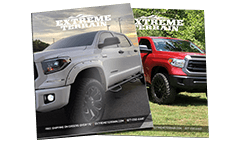Aftermarket Exhaust Systems for 2014-2021 Toyota Tundra
The aftermarket automotive parts landscape for the 2014-2021 Toyota Tundra, specifically in regards to the exhaust system, presents an array of options driven by factors like vehicle age, mileage, operating conditions, and maintenance history. These components, which primarily encompass the manifold, catalytic converter, muffler, and
exhaust pipes, serve essential functions in the
engine's operation, such as venting gases, reducing noise, and controlling emissions.
Material and Construction
Each component employed in the exhaust system is constructed from materials engineered for durability, heat resistance, and corrosion protection. Stainless steel is dominant due to its innate rust resistance and temperature tolerance, attributes that are vital given the extreme thermal and moisture conditions prevalent in
exhaust systems. More premium components may utilize materials such as titanium for its superior strength-to-weight ratio, enhancing performance by reducing overall vehicle weight.
Manufacturing Processes
Manufacturing processes for these parts involve precision engineering techniques, including welding, casting, and stamping. They may also entail more advanced processes like hydroforming in the production of complex shapes and tighter bends. Details of these processes directly influence product quality and functionality. For instance, mandrel bending, a technique used in exhaust pipe production, ensures the pipe retains a consistent diameter even around sharp bends, consequently minimizing exhaust gas backpressure.
Compatibility
The compatibility of the exhaust parts corresponds directly to the model, make, and year of the vehicle. Misfitting parts can result in performance problems and potential damage. Criteria such as the design of the exhaust manifold, the specific chemical content of the catalytic converter, and the volume and design of the muffler contribute to its compatibility with a specific engine design.
Quality Standards
Automotive parts, especially aftermarket components, must adhere to rigorous quality standards to ensure their safety, performance, and longevity. This encompasses industry standards like ISO 9001 and IATF 16949, which set out criteria for quality management systems within the automotive sector. Moreover, exhaust components, particularly
catalytic converters, are subject to stringent environmental regulations.
Performance Characteristics
Performance characteristics are vital considerations for aftermarket exhaust components. Properties such as exhaust flow rates, sound levels (measured in decibels), and power gains (typically expressed in horsepower), among others, are significant points of evaluation. Turbo-back or cat-back exhaust systems can provide notable power increases due to their enhanced exhaust scavenging and reduced backpressure.
Related Modifications
When car enthusiasts modify a Toyota Tundra exhaust system, it's fairly usual to simultaneously tweak related systems to optimize the full set of upgrades. For example, tweaking the engine's ignition or fuel systems, installing a high-flow
fuel filter or cold air
intake systems can complement an aftermarket exhaust upgrade.
Maintenance
Maintaining these aftermarket exhaust components is a crucial part of assuring optimal vehicle performance, efficiency, and safety. Regular inspections for rust, cracks or holes, listen for unusual sounds, and watch for reduced fuel efficiency or slower acceleration are recommended. Investing in high-quality aftermarket parts crafted with precision and the right materials can prove beneficial in the long run, enhancing the driving experience without compromising the vehicle's lifespan.












